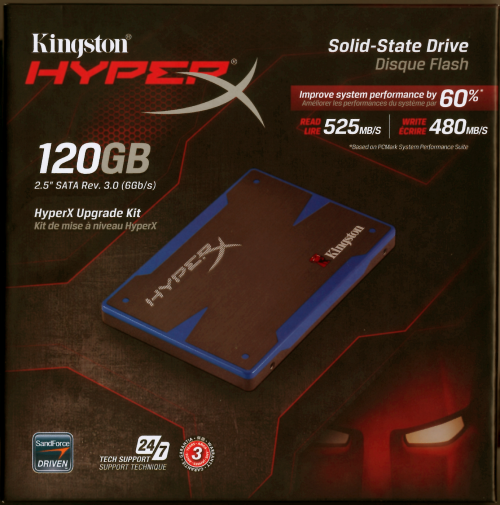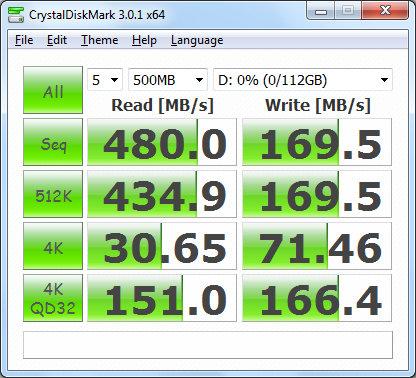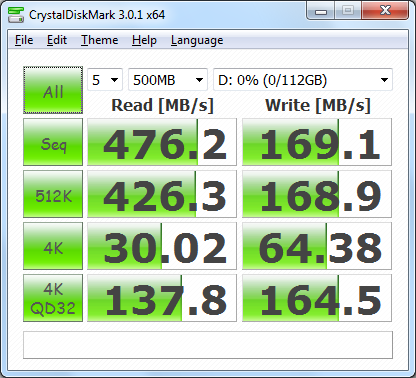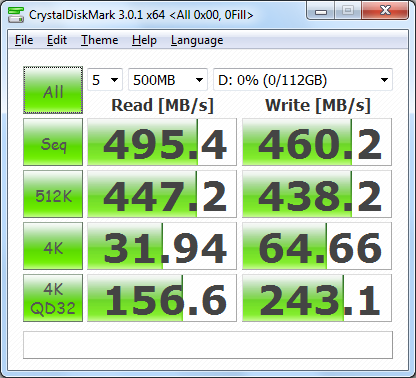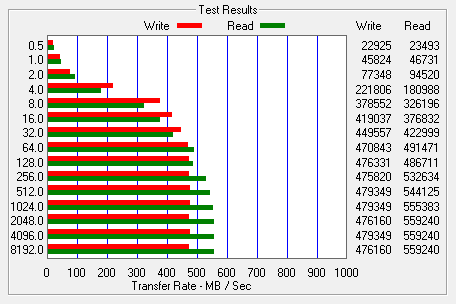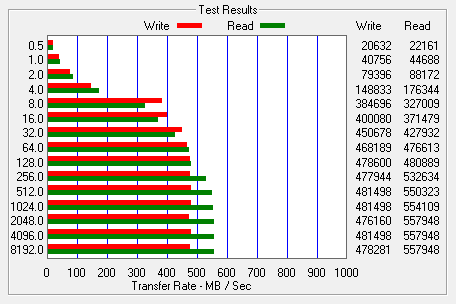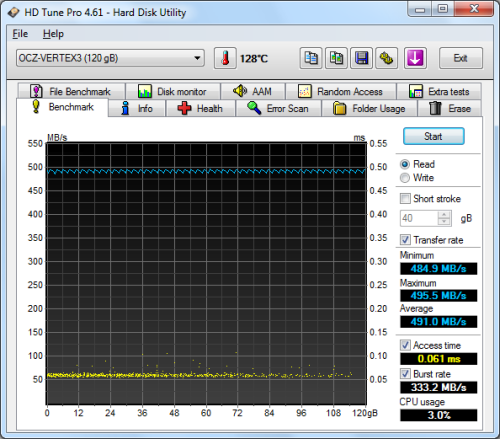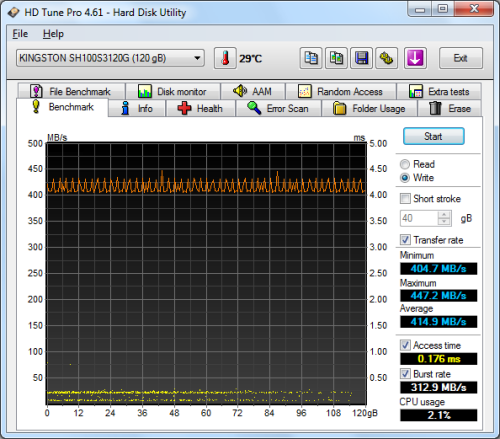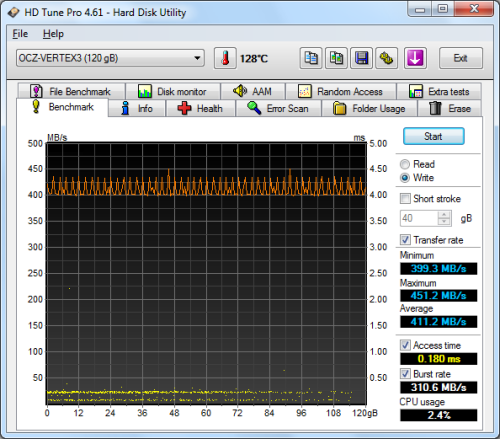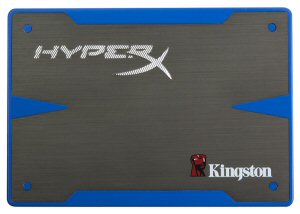

Model: Kingston HyperX 120GB Solid State Drive
Manufacturer: Kingston
Provided By: Kingston
As the world’s largest independent manufacturer of memory products, Kingston Technology doesn't need much of an introduction. The company got its start in 1987, when the computer industry was suffering from a severe shortage of surface-mount memory chips. To provide a solution, Kingston's founders designed a new Single In-Line Memory Module (SIMM) that used readily available, older technology through-hole components. Today, Kingston offers more than 2,000 memory products for everything from computers, servers and printers to MP3 players, digital cameras and cell phones.
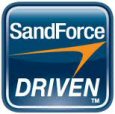
Like many other manufacturers, Kingston has set its sights on the growing solid-state drive (SSD) market. This fall, the company launched its first SandForce-based drive, the HyperX SSD. Designed for enthusiasts, gamers and performance users, the HyperX is powered by SandForce's SF-2281 processor and features a SATA 6GB/s interface as well as native TRIM support. Kingston's new SSD also uses Intel 25nm compute-quality MLC NAND flash in 120GB and 240GB capacities to deliver up to 555MB/s read and 510MB/s write transfer rates and up to 60,000 4KB random write IOPS.
The HyperX ships either as a standalone SSD or as a bundle with the HyperX Upgrade Kit for easy installation. For this review, Kingston sent us the 120GB HyperX Upgrade Kit. The 120GB version of the HyperX is capable of delivering up to 555 MB/s sequential read and 510 MB/s sequential write speeds as well as up to 20,000 random read and 60,000 random write IOPS.
| Kingston HyperX 120GB Solid State Drive | |||||||||||||||||||||||||||||||||||||||||||||||||
General Specifications
Performance
Reliability
Power Consumption
Environmental
Dimensions and Weight
Other Features
|
Needless to say, this is only a taste of what the HyperX has to offer. To give you an idea of what to expect, we'll take a closer look at Kingston's new SSD and then see how well it performs. Does the HyperX have what it takes? Can it deliver the performance we've come to expect from Kingston? Keep reading as we find out.
The HyperX comes in an attractive black and red box which is surprisingly large for an SSD. Along with a picture of the drive, the front advertises many of its key features including its 120GB capacity, rated speeds, SATA Rev 3.0 (6Gb/s) interface and SandForce controller. The back of the box provides a bit more information as well as pictures of the box's contents.
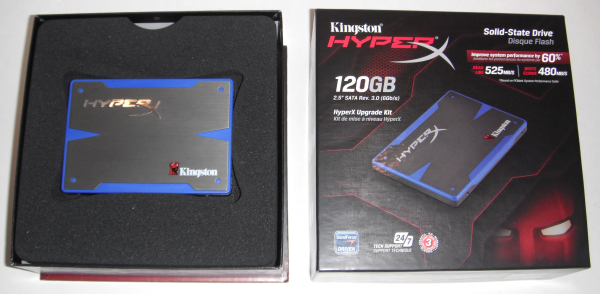
The upgrade kit that Kingston sent us for this review includes a number of accessories. Along with the HyperX SSD you'll find a 2.5" SATA enclosure with a USB-to-mini-USB cable, Serial ATA data cable, 3.5" adapter bracket with screws, screwdriver and a CD containing hard drive cloning software.
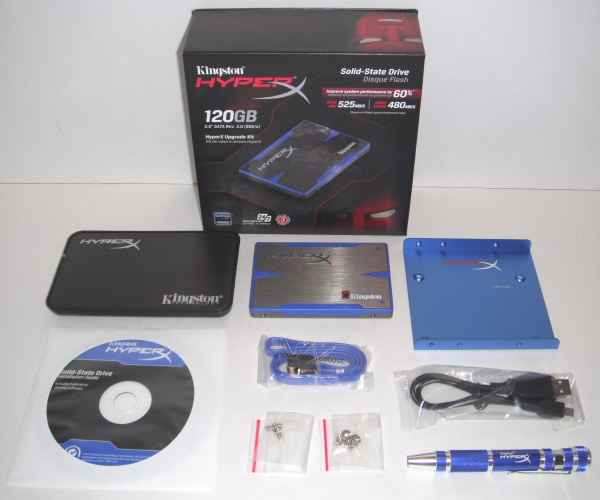
While I could do without the fancy, pen shaped screwdriver, the SATA enclosure is a nice touch. It not only lets you clone your computer's existing hard drive and move your data to the SSD, it can be used to convert any 2.5" SATA hard drive or SSD into a USB powered, portable unit.

Physical Features:
While a bit heavier than other SSDs, Kingston's new HyperX SSD is very well constructed. The top of the outer casing is made out of bright blue plastic that matches the other products in Kingston's HyperX series. The top is also covered by a brushed aluminum panel with "HyperX" and "Kingston" logos on it. The bottom of the HyperX isn't nearly as flashy. The casing is made out of metal. However, instead of brushed aluminum, Kingston opted for a rough, matte finish.

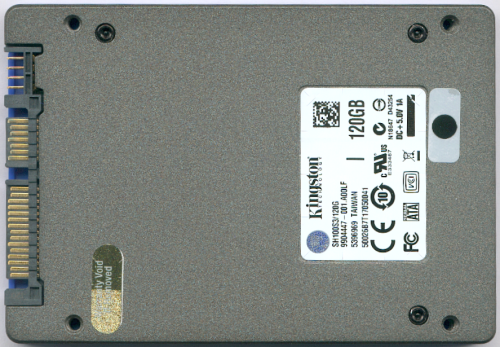
Normally at this point, I'd break out the screwdriver and take a look at the inside of the HyperX. However, Kingston has made it very difficult to open up the drive. Along with the usual "warranty void if removed" sticker, the HyperX is put together using four security hex screws. There is no way to get these out without having the right sized bit and of course, it isn't included with the bundled screwdriver. Even if you were able to get the screws out, the shell is reportedly hard to separate due to the use of thermal padding. Needless to say, I left the HyperX in one piece.
If you were to open the HyperX, you'd see that it uses SandForce's SF-2281 controller chip. The SF-2281 can be found in a number of other SSD's including the ADATA S511, Corsair Force Series 3, OWC Mercury 6G, Patriot Wildfire and OCZ Vertex 3 as well as Kingston's own business-equipped SSDNow KC100. The 128GB version of the HyperX also uses Intel's 8GB 25nm 29F64G08ACME2 synchronous NAND flash chips. There are eight of these chips on either side of the PCB, which, if you do the math, equals 128GB and not the 120GB of storage the drive advertises. The SandForce controller uses this extra 7% (8GB) to maximize read and write performance and extend the endurance and overall reliability of the drive.
The test system used in this review was an HP 8200 Elite. The computer came equipped with an Intel Core i5-2400 CPU, 4GB of DDR3 1333MHz memory, Seagate Barracuda 7200.12 ST3250312AS 250GB SATA 6 Gb/s hard drive, NVIDIA Quadro FX580 512MB PCIe graphics card and an Intel 82579-LM gigabit network card. For the operating system, I installed a fresh copy of Windows 7 Enterprise.
To test the performance of the Kingston HyperX, I ran a series of benchmarks using CrystalDiskMark 3.0.1, HD Tach RW 3.0.4.0, ATTO Disk Benchmark 2.46, AS SSD, HD Tune Pro 4.61 and Iometer. For comparison, I've also included test results from the OCZ Vertex 3, OCZ Agility 3 and Plextor PX-128M2S.
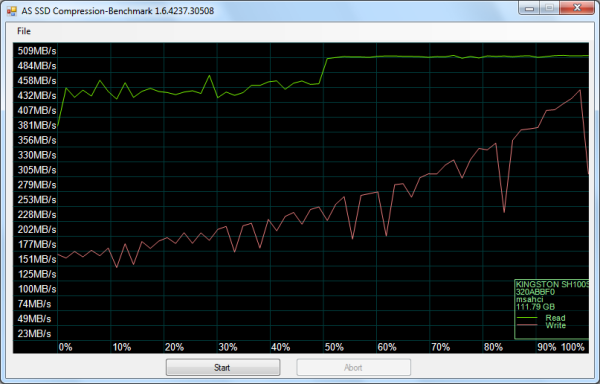
As I mentioned earlier, the HyperX SSD is based on SandForce's SF-2281 controller. Like other SandForce controllers, the SF-2281 features a technology called DuraWrite, which uses data compression to lower write amplification and extend the life of the drive by reducing the number of program-erase cycles. This data compression also plays a big part in the controller's performance. The more the data can be compressed, the faster an SSD like the HyperX is able to read and write. Looking at the screenshot above, you can see that there is a considerable performance difference when writing incompressible (0%) and compressible (100%) data. However, thanks to the HyperX's synchronous NAND, its read speeds aren't affected nearly as much.
CrystalDiskMark 3.0.1:
First, I ran a few quick tests using CrystalDiskMark. This benchmark tool measures the performance of a storage device by testing its sequential read and write speeds as well as its random read and write speeds using blocks 512K and 4K in size.
According to Kingston, the 120GB HyperX SSD is capable of reading at 555MB/s and writing at 510MB/s when connected to a SATA 6 Gb/s port. While faster than the OCZ Vertex 3, the drive's sequential read and write speeds came up a bit short of these numbers when using CrystalDiskMark's default (random) test data.
Like the Vertex 3, the HyperX performed much better when using highly compressible 0x00 (0 Fill) data. This time around, the drive was able to read at 487.1 MB/s and write at 448.4 MB/s.
HD Tach RW 3.0.4.0:
Next, I used HD Tach to test the HyperX's read, write and burst speeds as well as its seek times and CPU usage.
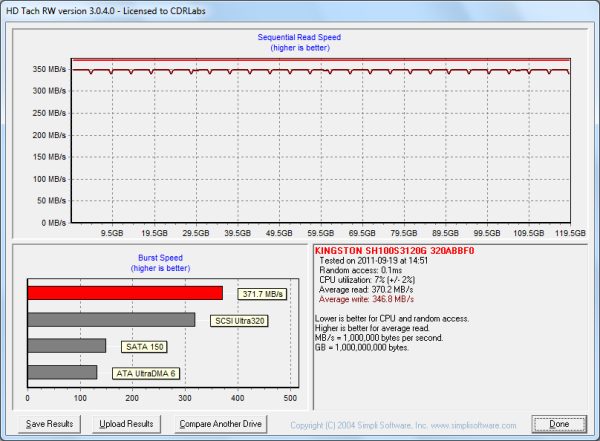
Looking at the screenshot above, you can see that the HyperX SSD had average read and write speeds of 370.2 MB/s and 346.8 MB/s respectively, as well as a burst speed of 371.7 MB/s.
ATTO Disk Benchmark 2.46:
I also used ATTO Disk Benchmark to test the HyperX's sequential read and write speeds. The tests are run using blocks ranging in size from 0.5KB to 8192KB and the total length set to 256MB.
When tested with ATTO, the HyperX's read speeds topped out at about 559 MB/s and its write speeds at 479 MB/s.
AS SSD:
AS SSD is a relatively new benchmark designed specifically for solid state drives. The application contains five synthetic tests used to determine the sequential and random read and write performance of a drive. Take note that AS SSD uses incompressible data in its tests, which can have a major impact on the scores of SandForce-based drives like the HyperX.

AS SSD also includes a copy benchmark. This test copies an ISO (two large files), program (many small files) and game (small and large files), returning the speed and duration of each.

HD Tune Pro 4.61:
Next, I ran a series of tests using HD Tune Pro. This hard disk utility measures a drive's performance by testing its sequential read and write speeds as well as its access time, burst rate and CPU usage. For this review, I'm also going to use it to benchmark the HyperX's random read and write speeds, random access times and the number of operations per second.
The HyperX performed very well when benchmarked with HD Tune. The drive had average read and write speeds of 492.5 MB/s and 414.9 MB/s, respectively, and a burst rate of 328.4 MB/s when reading.
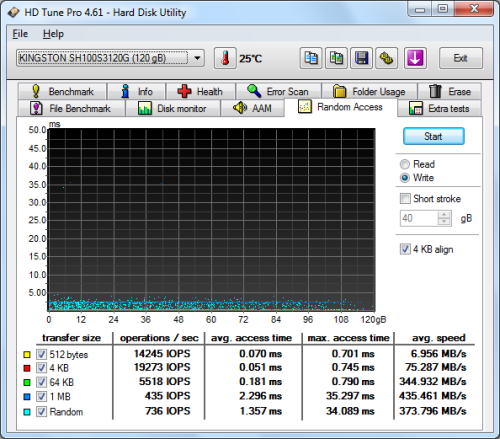 Kingston HyperX 120GB - HD Tune Random Access Write |
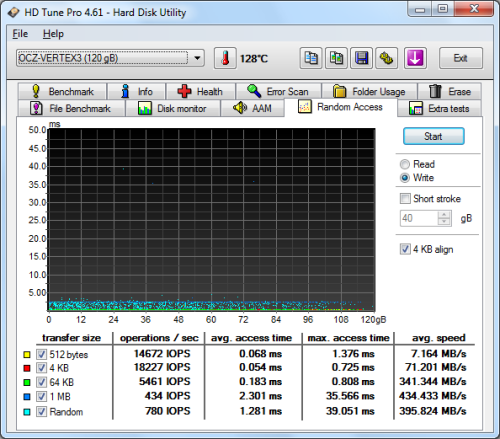 OCZ Vertex 3 120GB - HD Tune Random Access Write |
The HypreX didn't disappoint when doing random reads and writes. When reading 4KB blocks, the drive reached 13514 IOPS and had an average speed of 52.791 MB/s. The HyperX was even faster when writing, reaching 19273 IOPS with an average speed of 75.287 MB/s.
Iometer:
Lastly, I ran a series of tests using Iometer. This tool can be configured to benchmark a number of things. In this case, I used it to measure the HyperX's read and write speeds and the number of operations per second. The tests were run using both repeating and random bytes and a queue depth of 3.

The HyperX's performance was very similar to what we saw in our other tests. With highly compressible, repeating data, the drive was able to read at 526.93 MB/s and write at 464.11 MB/s. The HyperX did not slow nearly as much as the Agility 3 when reading random data. However, its write speeds dropped to 164.19 MB/s.
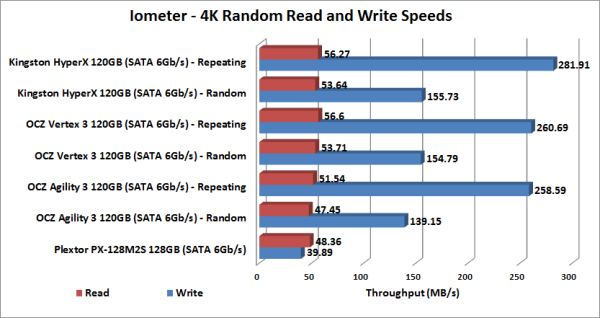
The HyperX performed very well when doing random reads and writes. With repeating data, the drive was able to read at 56.27 MB/s and write at a blazing 281.91 MB/s. Here too, the HyperX took a performance hit when tested with random data. However, it was still able to write at 155.73 MB/s.
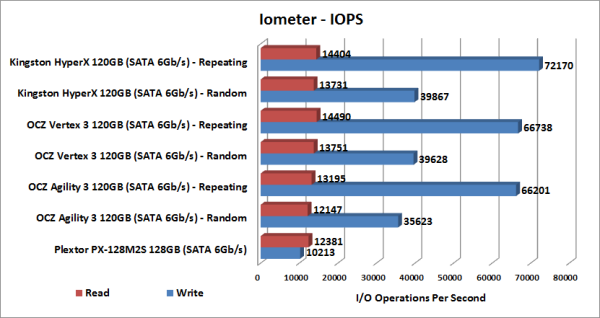
According to Kingston, the HyperX is capable of 60,000 IOPS when randomly writing 4K blocks. In our tests, the drive reached 72,170 IOPS with repeating data and 39,867 IOPS with random data.
TRIM Performance:
While SSDs offer many benefits, there are some downsides to using flash memory. One of the biggest issues people run into is performance degradation. Over time, an SSD will run out of fresh blocks and will have to write over data the file system has marked as deleted. This procedure is very complicated and can slow an SSD's write speeds considerably.
To address this problem, most manufacturers have added TRIM support to their SSDs. The TRIM command allows an operating system, such as Windows 7, to tell an SSD which data blocks are no longer in use. Using this information, the drive pro-actively erases these blocks and adds them to the free block pool.

To test the HyperX's TRIM function, I first put the drive in a "dirty" state. I used Iometer to fill the entire drive and then ran a random write test for 20 minutes. Looking at the screenshot below, you can see that the HyperX's average read and write speeds dropped to 115.8 MB/s and 308.1 MB/s, respectively.
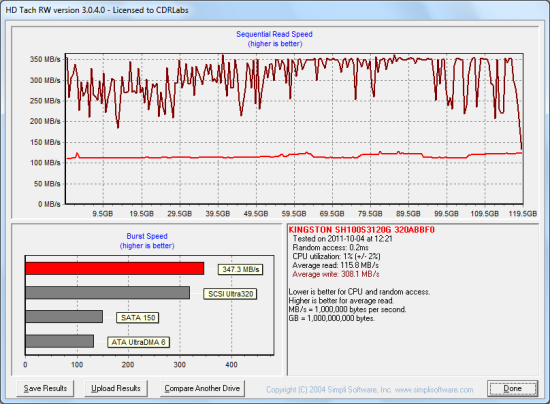
Kingston HyperX - Dirty
To see how well the HyperX could recover, I let the computer sit for a few hours and then reran the test. The drive's average write speed jumped back up to 345.1 MB/s. However, its read speed lagged a bit behind, averaging out at 296.0 MB/s.
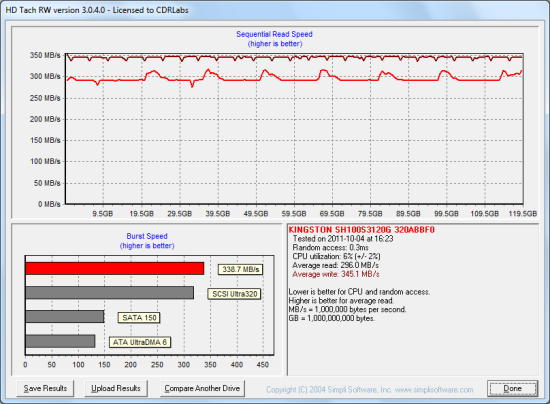
Kingston HyperX - After Trim
Lastly, I used OCZ's Toolbox utility (yes, it works) to perform a secure erase on the HyperX. With the drive wiped clean, its read speed jumped back up to 363.0 MB/s.
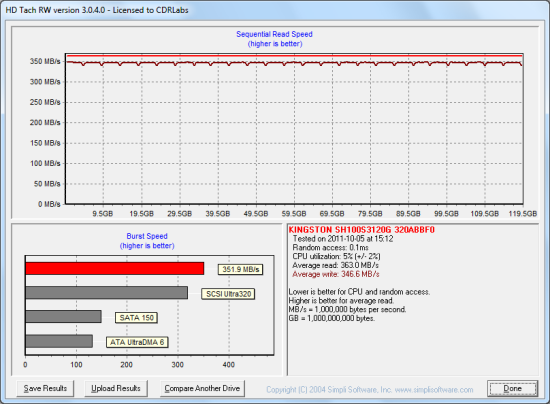
Kingston HyperX - Wiped
Final Thoughts:
With the HyperX SSD, Kingston has made its long awaited entrance into the high-performance SSD market. Targeted at enthusiasts, gamers, and performance users, this new SSD combines the latest SandForce SF-2281 controller with Intel's 25nm synchronous NAND flash. As you'd expect, this combination produced some impressive performance numbers. In our sequential read and write tests, the HyperX was able to read at speeds as high as 559 MB/s and write at speeds in excess of 460 MB/s. It also performed very well when doing random writes, delivering more than 72,000 IOPS. Impressive performance isn't the only thing the HyperX has to offer either. Along with a great looking design, the SSD is available as a standalone drive or as part of an upgrade kit for easy installation.
As usual, performance like this doesn't come cheap. The 120GB HyperX Upgrade Kit reviewed here currently retails for about $250. You can save about $10 by buying the standalone drive. However, if you're truly on a budget, the OCZ Vertex 3 or Corsair Force Series GT may be a better choice as both can be picked up for around $200. The price of the 240GB HyperX actually is more in line with the SSDs from the competition. However, with the price of the standalone drive starting at around $450, it's still a considerable investment.

Highs:
- Available in 120GB and 240GB capacities
- Excellent sequential read and write speeds
- SATA 6Gb/s interface
- Synchronous NAND flash
- Supports SMART, TRIM and Garbage Collection
- Standalone drive includes a 2.5" to 3.5" adapter bracket
- Available as a bundle with the HyperX Upgrade Kit
- Good looking and well constructed design
- 3 year warranty
Lows:
- Not as fast when writing incompressible data
- Pricey


